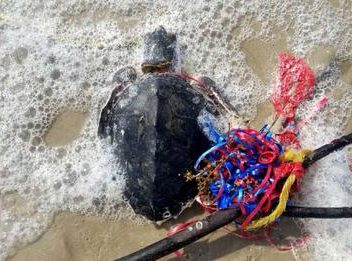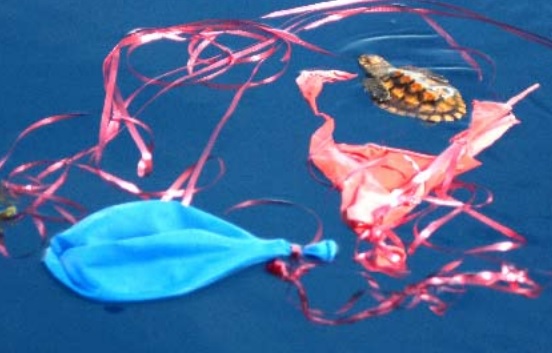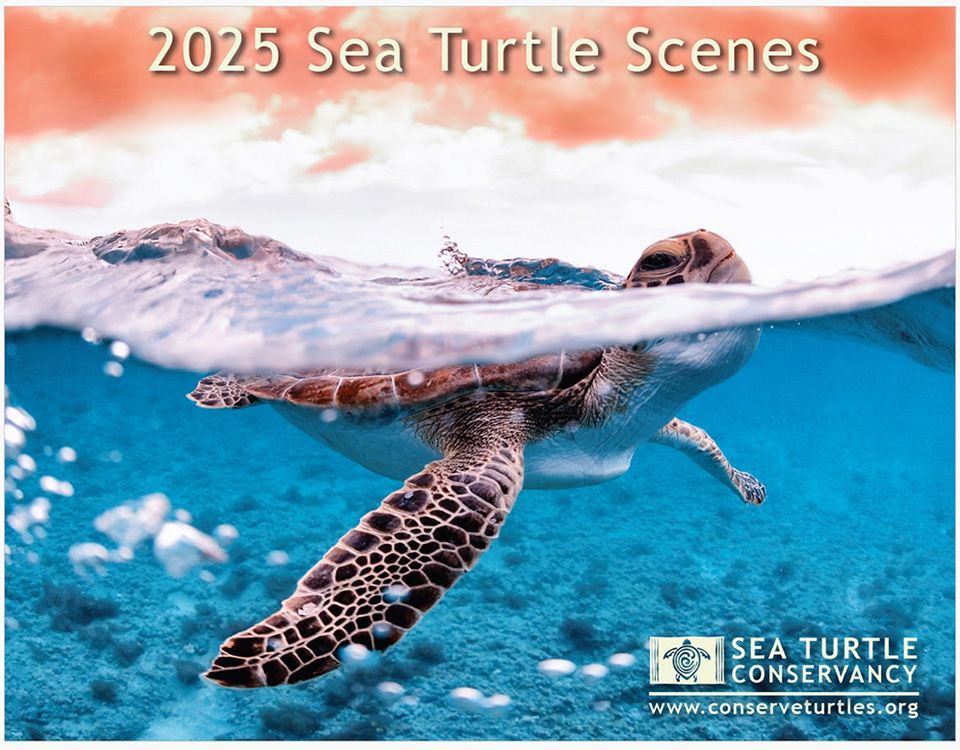A major threat to sea turtles is the ingestion of or entanglement with marine debris, including single-use balloons. Although many Floridians participate in balloon releases as part of a celebration or to honor a loved one, once balloons are released, they can travel thousands of miles before landing. When a balloon bursts and lands in the ocean, sea turtles and other marine wildlife often consume it because of its resemblance to jellyfish. Sea turtles are unable to regurgitate, so once the balloon enters the digestive tract, it can cause an impaction that can lead to death.

The ribbon attached to balloons also wraps around the flippers or necks of sea turtles, inhibiting breathing, eating or swimming. People who monitor sea turtle nesting around Florida report seeing balloons on nesting beaches on an almost-daily basis. Sea turtle rehabilitation facilities in Florida spend hours removing balloon material and other plastic debris from stranded sea turtles. The Florida Fish and Wildlife Conservation Commission has numerous records of sea turtle deaths associated with balloons.
We are encouraged to see the filing of H.B. 91 – Release of Balloons, which would close a loophole allowing countless balloons to enter our waterways and kill marine life, including sea turtles. Currently, Florida Statute 379.233 prohibits the release of ten or more balloons per day, but makes an exception for “biodegradable” balloons, which is not scientifically sound. By removing these two loopholes, as read in H.B. 91, Florida can drastically reduce plastic debris in the marine environment and save countless marine animals.
All species of sea turtles found in Florida’s coastal and nearshore habitats are listed as either “threatened” or “endangered” under the U.S. Endangered Species Act, meaning that they are at risk of extinction. A number of man-made threats, including coastal development, light pollution, boat strikes, commercial fishing interactions, and plastic pollution are contributing to their decline. While reducing plastic pollution in the ocean as a whole will require systemic change, stopping intentional balloon releases and their debris in the marine environment is achievable through laws such as H.B. 91. By supporting the balloon release ban in Florida in 2023, you can directly improve sea turtle nesting and foraging habitat.

The 2023 Legislative Session begins on March 7 and ends on May 5. To support this legislation, STC encourages Floridians and all sea turtle enthusiasts to contact state House Representatives and Senators and ask them to support H.B. 91, the intentional balloon release ban, when it is scheduled in their committees and up for consideration on the House and Senate floor. While emailing is helpful, directly calling legislators at their district or Tallahassee offices and speaking with their staff is especially impactful. If you are unsure who your legislators are, follow the links below.
Find your Florida Senator: https://www.flsenate.gov/senators/find
Find your Florida House Representative: https://www.myfloridahouse.gov/findyourrepresentative
